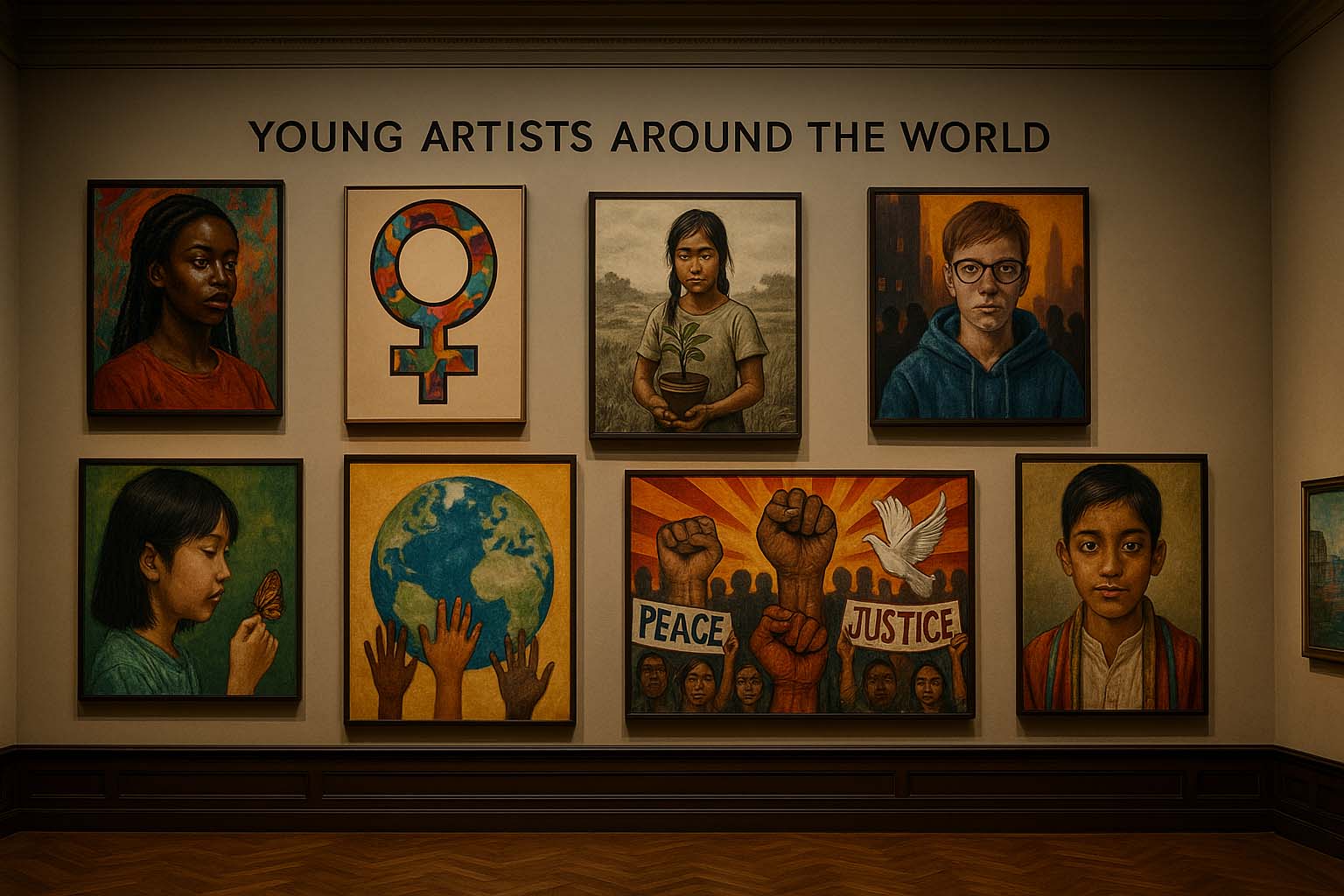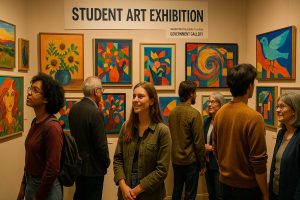
Recognizing Young Artists on the Global Stage
News about secondary school students gaining international acclaim for their art often brings joy to anyone who values creativity. Each painting, sculpture, digital piece, or mixed-media collage that receives praise is proof that talent isn’t restricted by age, income, or geography. For teachers, parents, curators, and art groups like the Sault Area Arts Council, these stories mirror a shared hope: to see youth thrive and be recognized for their creative abilities.
• Global art competitions now welcome thousands of submissions from high school students.
• Awards often lead to scholarships, mentorships, and exhibits.
• Winners inspire their peers and communities, helping shape the future of the arts.
• Supporters can take specific steps to help more young people create and celebrate art.
Broadening Recognition for Student Creators
The idea of youth art awards isn’t new, but the scale and impact of current competitions have grown remarkably. In the U.S., the Scholastic Art & Writing Awards draw thousands of entries annually. In Europe, the Royal Academy’s Young Artist of the Year program showcases youth work in its own gallery. Meanwhile, in Asia, the International High School Arts Festival in Tokyo features participants from over 40 nations.
These contests show the strong connection between the rise of digital sharing platforms and the speed at which new talent emerges. At the same time, local groups that offer physical spaces remain key to discovering and supporting student work.
Why Student Recognition Matters
Receiving a certificate, medal, or honorable mention can spark three major shifts for a young artist:
Building Confidence
Seeing their name on a regional list gives students real validation for the hours and effort spent creating their work.
Opening Educational Doors
Many art colleges and universities offer partial scholarships or portfolio reviews to students with a proven record of artistic achievement.
Expanding Creative Circles
Gallery openings and online showcases connect students with fellow artists, curators, and art professionals who may support their development in the years ahead.
A win isn’t just about the prize. It’s a signal that says, “I’m here and ready to grow.”
What Judges Usually Look For
Juries assess submissions based on several criteria:
Original ideas – Does the concept or execution stand out?
Skill level – Are the brushstrokes, color blending, or digital effects clean and purposeful?
Message depth – Does the artwork communicate a story or idea clearly?
Presentation – Is the framing, lighting, or file quality professional?
Some contests also include special categories, such as artwork addressing climate change or social justice. While judging often follows a rubric, subjectivity plays a role. That’s why guidance from teachers and peers during the preparation stage is so helpful.
Global Programs Recognizing Youth Art
Scholastic Art & Writing Awards (North America)
This century-old program receives entries from students in grades 7 through 12. Notable former participants include Andy Warhol and Tschabalala Self. Select pieces are displayed in a national exhibit visited by over 20,000 people yearly.
Young Artist of the Year (Europe)
The Royal Academy in London selects 200 works from young creators and includes them in its annual Summer Exhibition. This gives student artists an unusual chance to be seen by serious collectors at an early age.
International High School Arts Festival (Asia)
Held at the Tokyo Metropolitan Art Museum, this event gathers young talents from Asia, Oceania, and Africa. A highlight is the collaborative mural session, where students trade ideas, share techniques, and build friendships across cultures.
Youth Art China Biennale (Hybrid Format)
This Shanghai-based event combines live shows and global livestreams. A unique feature is the AR gallery that adds digital layers to physical artwork when viewed through smartphones. It’s a clear example of how technology can broaden access and engagement.
Impact on Growth and Community
A win doesn’t only benefit the student—it affects their surroundings, too. At school, art programs often receive more funding as a result. Administrators may invest in canvases, paints, or tablets. Beyond school grounds, groups like the Sault Area Arts Council gain solid reasons to raise funds for travel support and community exhibits.
This spark leads to broader effects:
The winning student becomes a role model.
Younger classmates see that it’s possible to display work in a museum.
Parents and local sponsors become more open to supporting art fairs.
Even in fast-paced modern life, people pause to peek into galleries and cheer on local talent.
How to Support the Next Generation
Offer Studio Visits
Invite students into professional art studios so they can observe real workflows and daily routines.
Donate Materials
A small set of oil pastels or a digital design app subscription can make a big difference for students with limited resources.
Host Portfolio Review Events
Bring in curators or college representatives to give free feedback on student work.
Create Community Exhibits
Use public spaces like libraries or city halls to showcase student creations to a wider audience.
Looking Ahead for Youth and Art
With the rise of virtual galleries and NFT-ready platforms, young artists can now reach audiences across continents. Still, physical galleries remain important. They allow people to see textures, subtle shadows, and brushwork up close—experiences that screens can’t replace.
Experts also highlight the emotional and mental health side of art exposure. More visibility sometimes brings doubt or pressure. To help, mentorship circles are growing. They teach time management, focus, and the ethics of building a sustainable creative career.
These contests don’t mark the finish line. Instead, they serve as bridges to a wider world. A regional honor can lead to international opportunities—from artist residencies in Italy to indie book illustrations in Latin America to public mural commissions in African cities.
Youth-driven art often reflects perspectives and stories that older generations have missed. By recognizing these voices, we enrich our collective experience.
Creativity That Builds the Future
Each certificate or medal given to a high school artist reflects belief in creative power. As their work gains recognition, hope grows that more young people will be encouraged to paint, sculpt, or animate their dreams.
Art connects cultures. Through these efforts, students are laying down the newest steps that may one day lead us all to a brighter, more colorful world.

